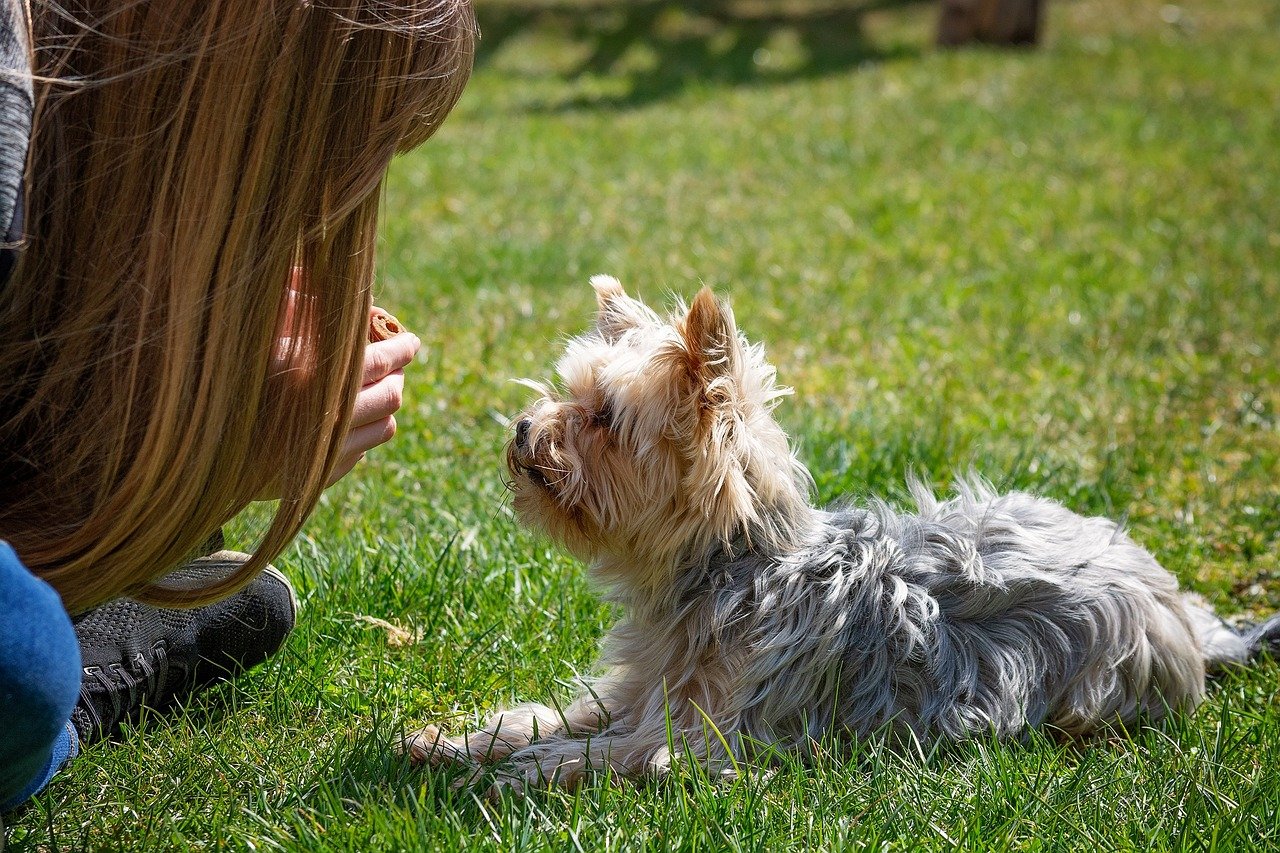Understanding Your Dog’s Body Language During Training: Tips for Dog Training

Introduction
Have you ever been perplexed as to what your companion is attempting to convey during training sessions? Amidst the din of howls and wags of the tail, an unspoken language awaits comprehension. How can you better your training sessions through the interpretation of your feline companion’s body language?
1. The Language of Tail Wagging
The tail of your dog serves a purpose beyond being a cute accessory; it is an effective means of communication. The manner in which your dog’s tail wags and flicks, ranging from delighted to cautious, can provide significant insight into their emotional state. A rapid, vigorous wag generally denotes elation and enthusiasm, whereas a sluggish, low wag could potentially signify unpredictability or distress. By interpreting the tone of your dog’s tail, you can more accurately determine their disposition and customize your training philosophy accordingly.
2. Opinions are as follows
Compared to an emotional antennae, your dog’s ears transmit its emotions to the outside world. Ears that are erect indicate interest and focus, whereas ears that are compressed imply apprehension or submission. Throughout training sessions, assess your dog’s level of comfort and engagement by observing the position of their ears. By recognizing and responding to the aural language of your dog, you can foster an environment conducive to learning and self-assurance.
3. Interpreting Facial Expressions of Your Dig During Dog Training
Dogs, similar to humans, communicate a great deal of information via their facial expressions. Soft eyes and a relaxed, open mouth are indicative of contentment and relaxation, whereas tense facial musculature and narrowed eyes may indicate unease or apprehension. By adjusting your approach during training in accordance with your dog’s facial expressions, you can gain a more comprehensive understanding of their emotional state and guarantee a constructive and amicable session.
4. Posture and Movement of the Body
The body language of your companion is an ever-changing reflection of their inner world. A posture that exudes confidence and readiness is characterized by a forward lean, whereas one that is tense or hunched may imply anxiety or hesitation. Vigilantly monitor the behaviours exhibited by your canine companion, including pacing, circling, and stiffening, as these can yield significant indications regarding their degree of involvement and ease. It is possible to tailor training techniques to the specific requirements and preferences of a dog by analyzing their body language.
5. Comprehending Signals of Stress:
Dogs exhibit a variety of subtle signals of tension that are difficult to overlook if one fails to pay attention. Frequent manifestations of tension encompass lip licking, yawning, excessive panting, and avoidance of eye contact. Upon observing these indicators while in training, it is critical to halt and reevaluate the circumstance. By responding with forbearance and compassion to your dog’s stress signals, you can establish a secure and encouraging training environment that promotes the development of trust and confidence.
Why Us
If you are looking for the best dig training services near you, madiahhinds.com is the best option. We don’t just say it, but we have also been doing this amazing work for years, which has also helped us make our name in the industry.
Conclusion
Are you prepared to strengthen your bond with your canine companion? Achieving proficiency in your dog’s silent language can facilitate training sessions by fostering an unprecedented degree of cooperation and comprehension. In what ways can the mastery of canine body language augment the training process? As you embark on this journey of mutual comprehension and communication, can you envision the profound connection that awaits you and your furry companion?






